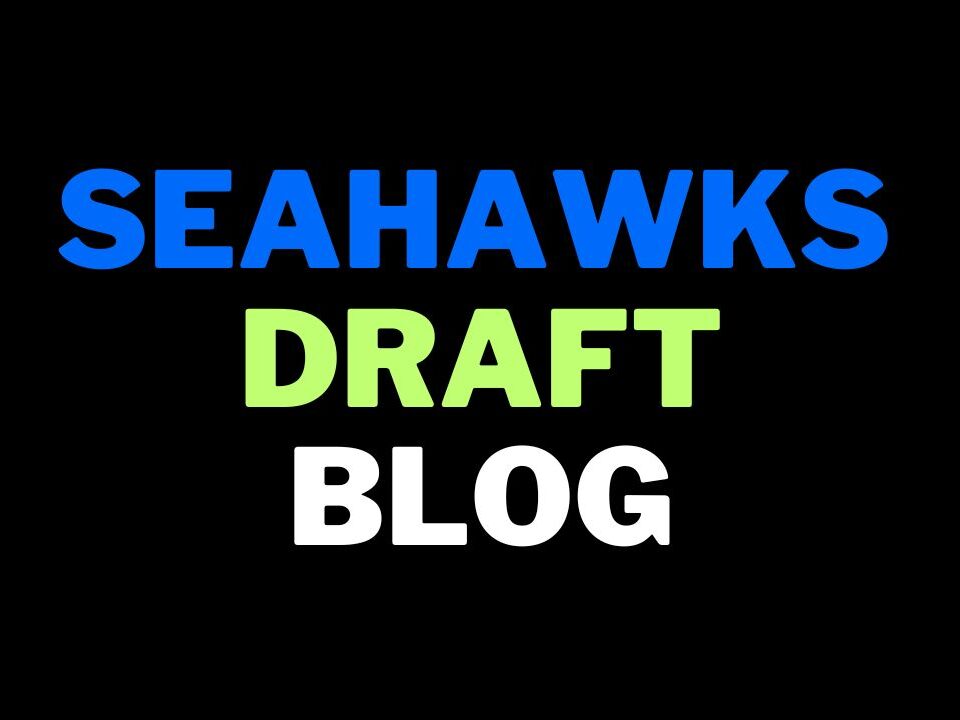Bray was listed at #31 on our 2013 watch-list. For all 2013 prospect videos, click here or select the ‘Game tape’ tab on the menu bar. Bray is an outside bet to declare for next years draft after missing considerable time in his first two seasons as a starter. However, a good 2012 could push him to turn pro. This isn’t his best game from 2011 but he does need time on the field to improve.
Category: Game Tape (Page 8 of 8)
Nobody else is talking about this guy and I’m shocked. Stunned. I ranked Simon at #14 on my 2013 watch-list. For all 2013 prospect videos, click here or select the ‘Game tape’ tab on the menu bar.
Bruce Irvin took 43 snaps against Pittsburgh, a game we reviewed earlier in the week. In the Orange Bowl he didn’t need such a workload as the Mountaineers blew Clemson away in a record breaking 70-33 victory. The nature of the snaps was interesting though.
Against Pittsburgh, 58% of Irvin’s snaps were on first and second down in basic down/distance situations (eg, 1st/2nd down between 0-10 yards). Against Clemson, Irvin didn’t take a first down snap until the second quarter and by half time, he’d only played three first downs. Overall he had 27 snaps, the difference of 16 in part due to the nature of the game (Pittsburgh was a one-point nail-biter). But it’s interesting that this time 81% of his snaps came on second or third down.
First down snaps: 4
Second down snaps: 14
Third down snaps: 8
Fourth down snaps: 1
Irvin had one short-yardage snap on 3rd and 3 in the second quarter, but didn’t take another snap with the distance between 0-5 yards.
0-5 yards: 1
5-10 yards: 20
10-20 yards: 5
20+ yards: 1
It’s no real surprise that he didn’t feature too heavily in a 37-point victory, but the snaps he took do give some insight into how he was used. The Mountaineers were determined to persevere with the 3-3-5, a system which is the very antithesis of a good scheme fit for #11. Maybe it’s not such a surprise they were managing what amounted to a 5-technique who, by his own admission, was playing between 220-230lbs. They made no attempt to max out the most prolific pass rusher on their roster by switching schemes. Thus, we see 27-snap games.
So how much of an impact he have in those 27 snaps? The tape above offers an insight into what Irvin will probably be as a pro. He’ll make two or three big plays in a game, he’ll provide consistent threat with edge speed and a good counter – but he’ll also be blocked out of series too. Irvin may never be an every down work horse, although the LEO by design offers potential to be a starter. Even f he does feature in just 50% of the snaps, he’s good enough to make enough key plays per game to warrant the #15 pick.
Against Clemson he made back-to-back splash plays at the end of the first half and start of the second. Go to 2:03 in the video above and you’ll see Irvin run out of the play originally as Tahj Boyd attempts to scramble up the middle of the field. Irvin loops back around the line of scrimmage and spots the quarterback, before making up 20-yards to strip the ball and force a fumble. It wasn’t just great hustle to rush back and make the play, it was also pretty instinctive to get the turnover. It’s also worth noting he made that effort with a minute to go in the half and with his team leading 42-20. He wasn’t in the locker room. He could’ve been – and who would’ve blamed him – but he wanted more points.
The next big play is a sack, where Irvin leads the tackle to the edge before quickly cutting inside and taking down the quarterback. It’s a move he’s pretty much mastered and he’s very fluid when changing direction during a sprint. A tackle is always going to need to cover the inside counter. Yet by protecting inside, he’ll be susceptible to the speed around the edge. Irvin might not have superb upper body strength (although it’s underrated for his size) but having a counter move like this will cause pro-lineman problems, not just college left tackles.
He likes this move. Check 1:00 where he tries it again and probably should’ve drawn a holding call for the tackle basically grabbing him round the neck to avoid the sack.
There are also examples in the tape where the counter doesn’t work. See 0:13 where Irvin just lacks a little bit of extra juice in the cut and the tackle reads it. I keep reading that when a lineman gets his hands on Irvin it’s over, but I think we see in this play that he can fight, he’ll prod and jab. He almost tips the pass in the end because he has another fight to drive the tackle backwards. Don’t write off this guy’s ability to brawl.
Irvin shows decent instinct at 0:46 to read the play, work through traffic and do enough to put off Boyd and force him to throw the ball away. He’s stoned on four consecutive plays from 1:31-2:01, with the #63 dominating him with a good punch to the body and following through the block. This is really what Seahawks fans should expect at the next level – a lot of key defensive plays, but also a series or two where Irvin is just blocked out pretty comfortably.
Back to this 3-3-5 scheme, because he’s again playing in a three-man front. It’s going to be much harder to block the guy when he’s rushing opposite Chris Clemons with some beef in the middle, or even in an aggressive five-man front. He may be unblockable in those situations. It stands to reason that the Seahawks will utilise Irvin’s foot speed in the same way that San Francisco did last year with their first round pick. The 49ers would regularly send Justin Smith to the edge and have Aldon Smith loop around and attack through the middle, with all the attention going to Justin. The Seahawks will try and get Irvin into positions where he’s not accounted for and if he finds a gap, it’s over. They could even have Clemons and Irvin rush the same side. It’s impossible to see how WVU were getting anything like the best out of him in this 3-3-5 scheme… and he still made 20+ sacks in two years.
I’m still a little annoyed for second guessing myself and not spending the necessary time to understand the role he was being asked to play in West Virginia. The position never suited him and I didn’t pay enough attention to that when watching WVU games last season. Now that I have a reason to sit down and pick through this, I get it. And I also get why the Seahawks spent the #15 pick on Irvin, and why one GM called him the hottest prospect in the draft in the week leading up to April 26th. The raw speed, the surprising upper body strength, the ability to counter. “Bruce Irvin is ready to crash the 2012 NFL Draft” I wrote a year ago. Why did I ignore that?
There will be frustrating plays, but there’s also going to be an impact. People will watch this game and second guess themselves just like I did. The guy had a key sack and a forced fumble. He could’ve had another sack but for a blatant hold. If he’s recording that most weeks in Seattle, nobody will be giving the pick a D grade in twelve months time.
Irvin is going to be a headache to scheme against next season, particularly if there’s interior pressure from Mebane/Branch/Jones and continued effectiveness from Chris Clemons. It’s also going to be pretty difficult to send the tight end on a route when Irvin’s in the game and not playing with his hand in the dirt. He’s just not going to be truly effective on every series – but who really is? Rest assured that every offensive coordinator the team faces next year is going to be working overtime to find a way to block this guy. Specialist or not, he’ll have an impact.
Later I’ll be publishing a 2013 prospect watch-list. FSU’s Bjoern Werner will be on the board, so check out his tape below (courtesy of Aaron Aloysius). There’s also a new tab on the menu bar titled ‘GAME TAPE’ where you’ll find all the 2013 prospect tape (listed alphabetically) and also all of the 2012 draft class videos.
The first thing people want to know about Bruce Irvin is how many snaps he’ll take in Seattle. Pete Carroll claims he can play 600-700 snaps initially in the Raheem Brock role, but others have argued that Brock featured in around 550 snaps. Either way, Irvin can still have an impact at 500 snaps.
Before San Francisco’s week-16 meeting with Seattle in 2011, Aldon Smith had featured in 446 snaps. That was 377 less snaps than defensive rookie of the year Von Miller and 267 less than JJ Watt. Smith still managed to accumulate 13 sacks, 12 quarterback hits, 30 quarterback pressures and two forced fumbles. In comparison, Miller had 11.5 sacks, 19 quarterback hits, 28 pressures and three forced fumbles, despite playing nearly twice as many snaps. Watt had 4.5 sacks, eight hits, 24 pressures and two fumble recoveries. Stats aren’t everything, but it goes to show how Irvin won’t necessarily be required to play even 2/3’s of the team’s snaps to have an impact.
And that’s just as a rookie. If the plan is for Irvin to eventually replace Chris Clemons as the full time LEO, he’ll one day play the majority of the defensive snaps. A lot of people have criticised the nature of the pick, questioning how often Irvin will feature and what impact he’ll have. The Seahawks want their version of Aldon Smith, even if their version isn’t quite so orthodox. As John Schneider told Adam Schein today, “We thought there was a good chance the Jets were going to take him at 16. If we walked out without him, it would’ve hurt. If you like a guy, get him. 12, 15, 28.”
Continue reading

